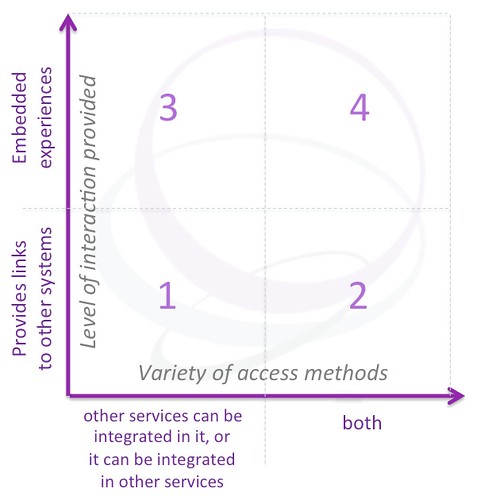
Level 0 = no out of the box integration at all, but do offer an API.
Level 1 = Ok: At the most rudimentary level, the vendor's platform enables events from other products to be broadcast into their activity stream, shown on pages, or similar. For example, events from CRM systems (opportunities, wins, etc) are broadcast into the activity stream or data is displayed on a person's profile. This type of integration is useful as events from multiple tools can be aggregated into a single experience where people can discover them, comment on them, like them, etc. Similarly some vendors offer the opposite type of integration, where their product can be accessed in other places. For example, adding the ability to comment on or share social networking conversations inside SharePoint via a web-part or on a web-page via an iframe. The problem at this level is that information is usually represented simply as links back to the source application, requiring people to click through to access the original object.
Level 2 = Good: Similar to level 1, but in this case the vendor provides both integration of other products within their platform as well as providing ways to integrate their features within other products. This provides customers more flexibility as there are more choices for how to access information and features.
Level 3 = Better: Similar to level 1, but now instead of simply providing links to objects in other products, people can get the full experience of that product right within the context of the social platform. For example, instead of just seeing a link to an expense report, you'd be able to view all the details and approve or deny the report right there. Another example would be full access to a CRM record rather than just a link that contains the customer name and some basic information.
Level 4 = Best: At the top of the scale vendors provide embedded experiences that can be accessed within their own environment and their features can be accessed within other tools. An example would be a vendor who enables ERP data to be access within their activity stream and they also provide their features inside email tools or websites.
In the future when I talk about a vendor's integration features I will be referencing where they fit into this model.
ICT4PE&D
No comments:
Post a Comment
Thank's!